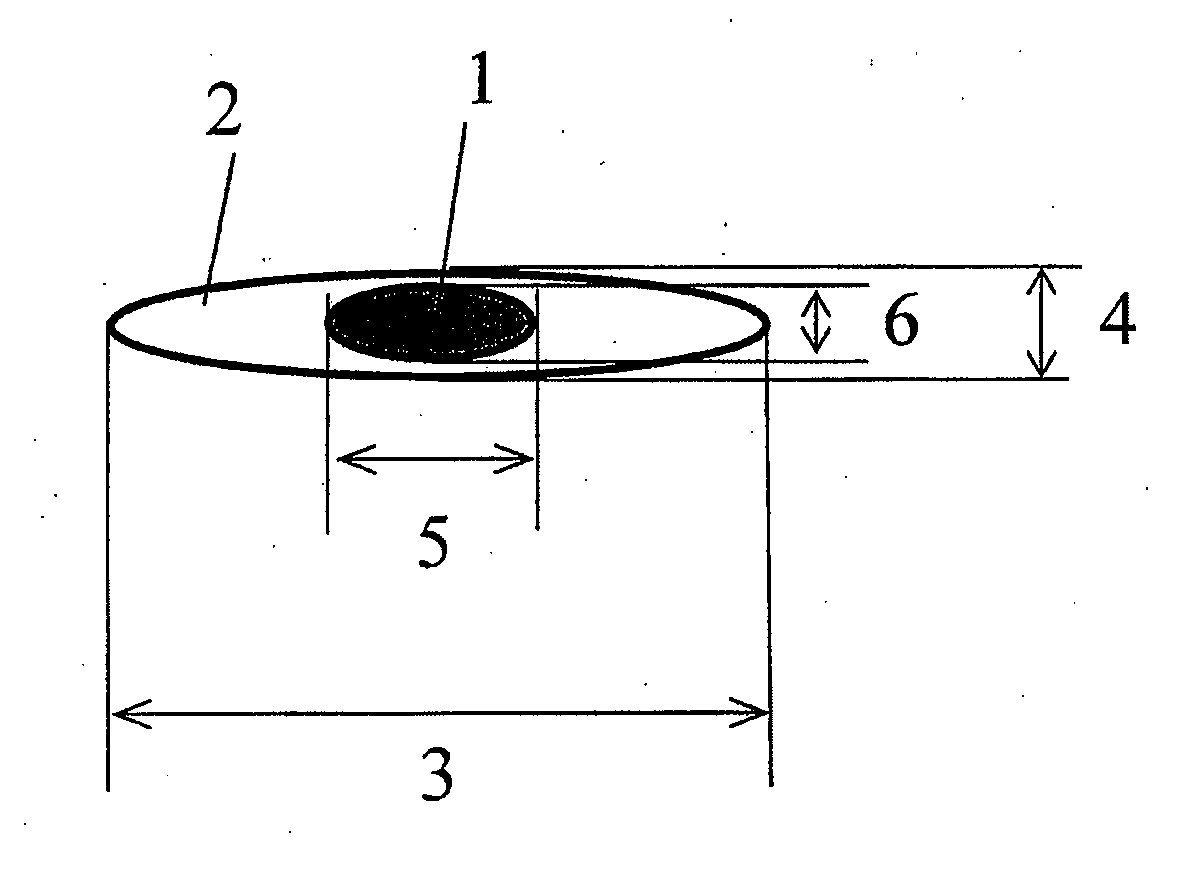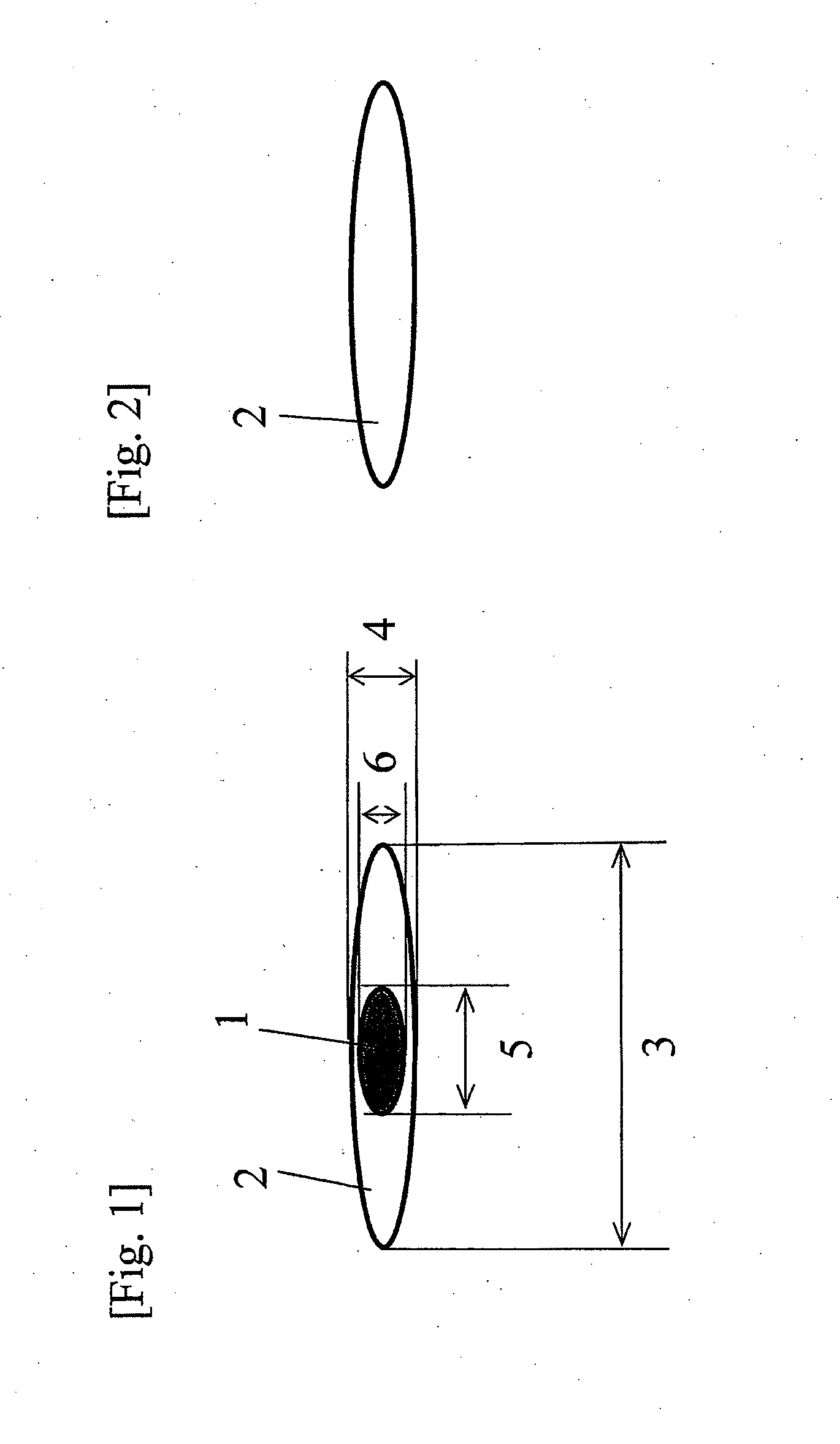White laminated polyester film for reflecting sheet
a polyester film and reflective sheet technology, applied in the field of white laminated polyester film for reflecting sheets, can solve the problems of difficult to make the productivity of films compatible with high reflectance and concealing properties, poor productivity, and loss of light scattered thereby, and achieve high concealing properties, not easily broken, and high reflectance
- Summary
- Abstract
- Description
- Claims
- Application Information
AI Technical Summary
Benefits of technology
Problems solved by technology
Method used
Image
Examples
example 1
(Production of Polyethylene Terephthalate Pellets (PET))
[0096]Terephthalic acid and ethylene glycol were used as an acid component and a glycol component, respectively. Antimony trioxide (polymerization catalyst) was added thereto so as to set the amount of the catalyst to 300 ppm of polyester pellets to be obtained in terms of antimony atom, and then the reactive components were allowed to undergo polycondensation reaction to yield polyethylene terephthalate pellets (PET) having an intrinsic viscosity of 0.63 dL / g and an amount of a terminated carboxyl group of 40 equivalents / ton.
(Production of Isophthalic Acid Copolymerized Polyethylene Terephthalate Pellets (PET / I12))
[0097]A mixture of 88% by mol of terephthalic acid and 12% by mol of isophthalic acid was used as an acid component, and ethylene glycol was used as a glycol component. Antimony trioxide was added, as a polymerization catalyst, thereto so as to set the amount of the catalyst to 300 ppm of polyester pellets to be obta...
example 2
[0123]The same way as in Example 1 was performed except that raw materials and conditions shown in Table 1 were used, and a white laminated polyester film having a thickness of 230 μm and having a composite structure of three layers of A / B / A wherein the thicknesses (μm) of one of the polyester layers (A), the polyester layer (B) containing voids therein, and the other of the polyester layers (A) were 15 / 200 / 15 was obtained. A light resistant cured layer was provided onto one side of the film in the same way as in Example 1. Properties of the resultant white laminated polyester film having the light resistant cured layer are as shown in Table 3. Although the reflectance and the concealing property were slightly poor, the film was acceptable.
example 3
[0124]The same way as in Example 1 was performed except that raw materials and conditions shown in Table 1 were used, and a white laminated polyester film having a thickness of 250 μm and having a composite structure of three layers of A / B / A wherein the thicknesses (μm) of one of the polyester layers (A), the polyester layer (B) containing voids therein, and the other of the polyester layers (A) were 8 / 234 / 8 was obtained. In the present example, no light resistant cured layer was provided.
[0125]Properties of the resultant white laminated polyester film having the light resistant cured layer are as shown in Table 3. The film was a film which had a high reflectance and a concealing property and was also excellent in film-formation stability. Since no light resistant cured layer was provided, the capability to absorb ultraviolet rays was slightly poor.
PUM
| Property | Measurement | Unit |
|---|---|---|
| refractive index | aaaaa | aaaaa |
| thickness | aaaaa | aaaaa |
| thickness | aaaaa | aaaaa |
Abstract
Description
Claims
Application Information
 Login to View More
Login to View More - R&D
- Intellectual Property
- Life Sciences
- Materials
- Tech Scout
- Unparalleled Data Quality
- Higher Quality Content
- 60% Fewer Hallucinations
Browse by: Latest US Patents, China's latest patents, Technical Efficacy Thesaurus, Application Domain, Technology Topic, Popular Technical Reports.
© 2025 PatSnap. All rights reserved.Legal|Privacy policy|Modern Slavery Act Transparency Statement|Sitemap|About US| Contact US: help@patsnap.com


